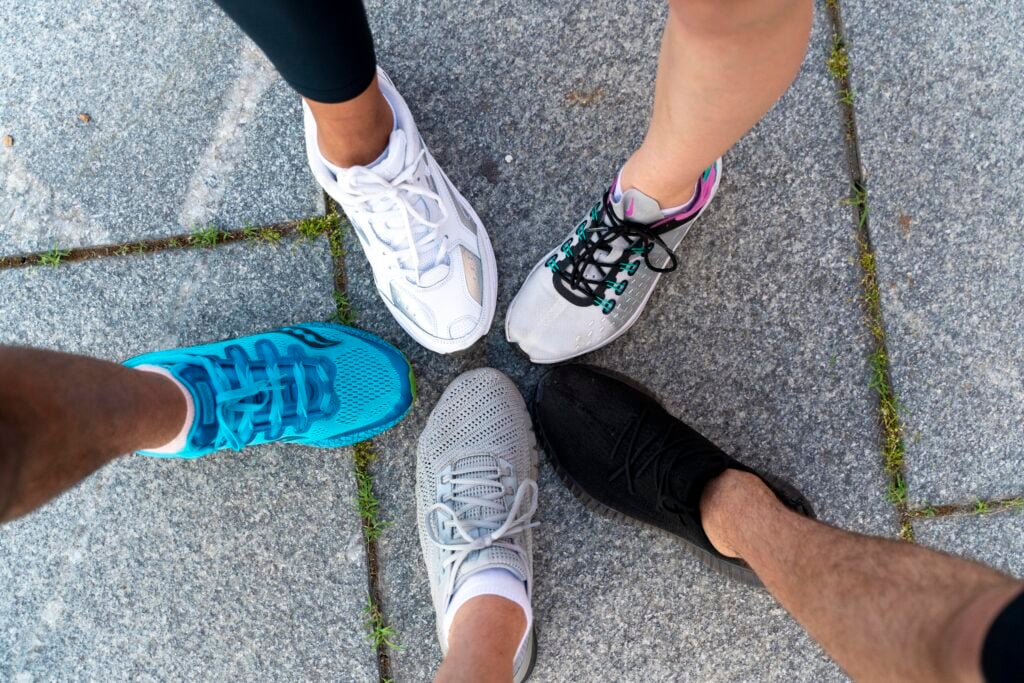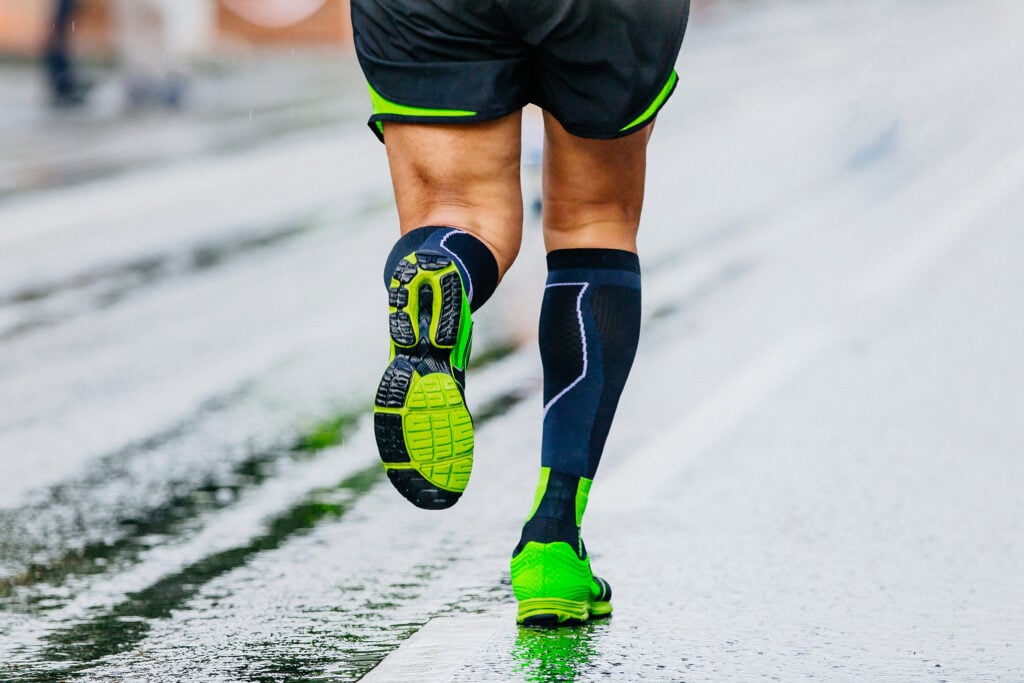
Many people think creatine is only for bodybuilders and weightlifters. We’re here to tell you that’s not true.
As runners, we can get serious benefits from this supplement, too.
Let’s examine creatine monohydrate, its benefits for runners, and the proper use of it.
What Is Creatine and How Does It Work?
Creatine Monohydrate is a natural compound in our muscles and foods like meat and fish. Our bodies use it to make energy quickly during short, intense activities.
When we run fast or tackle hills, our muscles use a quick energy system called ATP-CP (adenosine triphosphate (ATP) and phosphocreatine (PC)). Creatine helps refill this system faster.
By taking creatine supplements, we increase the amount stored in our muscles, giving us more fuel for high-intensity efforts.
Creatine monohydrate is the most tested form, with the most research backing it up. That’s why it’s the go-to choice for most athletes.
How Creatine Benefits Runners
We’ve found several ways creatine helps our running:
Stronger Sprints and Intervals
- Improves performance during speed workouts
- Helps maintain power during the final sprint of a race
- Makes hill repeats more effective
Better Recovery
- Reduces muscle soreness after hard workouts
- Allows for quality training on back-to-back days
- Helps muscles repair faster between sessions
Strength Gains
- Builds stronger leg muscles for better running form
- Improves running economy (how efficiently we use energy)
- Helps prevent injuries through increased muscle stability
Studies suggest that runners taking creatine are likely to experience improved performance during the final sprint of a race. The enhanced phosphocreatine stores can provide extra energy for that crucial finishing kick when you need to push through fatigue and maintain speed.
Common Myths About Creatine for Runners
Let’s clear up some confusion about creatine:
| Myth | Reality |
| “Creatine is only for bodybuilders.” | Research shows benefits for endurance athletes, too |
| “It causes water weight that slows runners down.” | Initial water retention is within muscles, not under skin; it doesn’t impact performance |
| “Creatine causes cramping.” | Studies show no increase in cramping with proper hydration |
| “Women shouldn’t take creatine.” | Benefits apply to all genders; no negative hormonal effects |
| “Creatine damages kidneys.” | No evidence of kidney harm in healthy people taking recommended doses |
The truth is that creatine is one of the most studied supplements, with a strong safety record when used correctly.
How to Use Creatine the Right Way
Using creatine effectively is pretty simple:
Dosage Options:
- Loading Method: Take 20g daily (split into 4 doses) for 5-7 days, then drop to 3-5g daily
- Gradual Method: Take 3-5g daily from the start (it takes longer to build up but causes less water retention)
Timing Tips:
- Take it daily (timing doesn’t matter much)
- Mixing with juice or a post-run smoothie may help absorption
- Consistency matters more than exact timing
What to Expect:
- Some people gain 2-4 pounds initially (muscle water retention)
- Full benefits kick in after 2-4 weeks
- Track your interval workouts to notice improvements
Practical Tips for Runner-Friendly Creatine Use
Here’s what we’ve learned about making creatine work for our running:
Choosing a Product:
- Look for “creatine monohydrate” with no extra ingredients
- Find products with third-party testing certifications
- Powder forms are usually cheaper than pills or capsules
Smart Usage for Runners:
- Consider timing your creatine cycle with speed-focused training blocks
- You don’t need to “cycle off” creatine; continuous use is fine
- If racing in a weight class, be aware of the initial water weight gain
Who Should Think Twice:
- People with kidney disorders
- Those with certain medical conditions
- Always check with your doctor first if you have health concerns
Our Take: Is Creatine Worth It for Runners?
We think creatine is worth trying if:
- You do speed work, intervals, or hill training
- You’re looking for better recovery between hard workouts
- You want an extra edge in the finishing kick of races
- You’re trying to build strength for better running form
The research backs up creatine’s benefits, and it’s one of the more affordable supplements at about 10-30 cents per day.
Start with a small container to see how your body responds. Pay attention to how you feel during hard workouts and recovery days. Not every supplement works the same for everyone, but creatine has enough evidence behind it to deserve a spot in many runners’ nutrition plans.
If you want one supplement that improves your running performance, especially for speed work and recovery, creatine monohydrate is probably it.
Just keep in mind that no supplement replaces good training, proper nutrition, and adequate rest.
Remember: While this article provides general information about creatine for runners, everyone’s body is different. Get a proper consultation with your healthcare provider before starting any new supplement.





